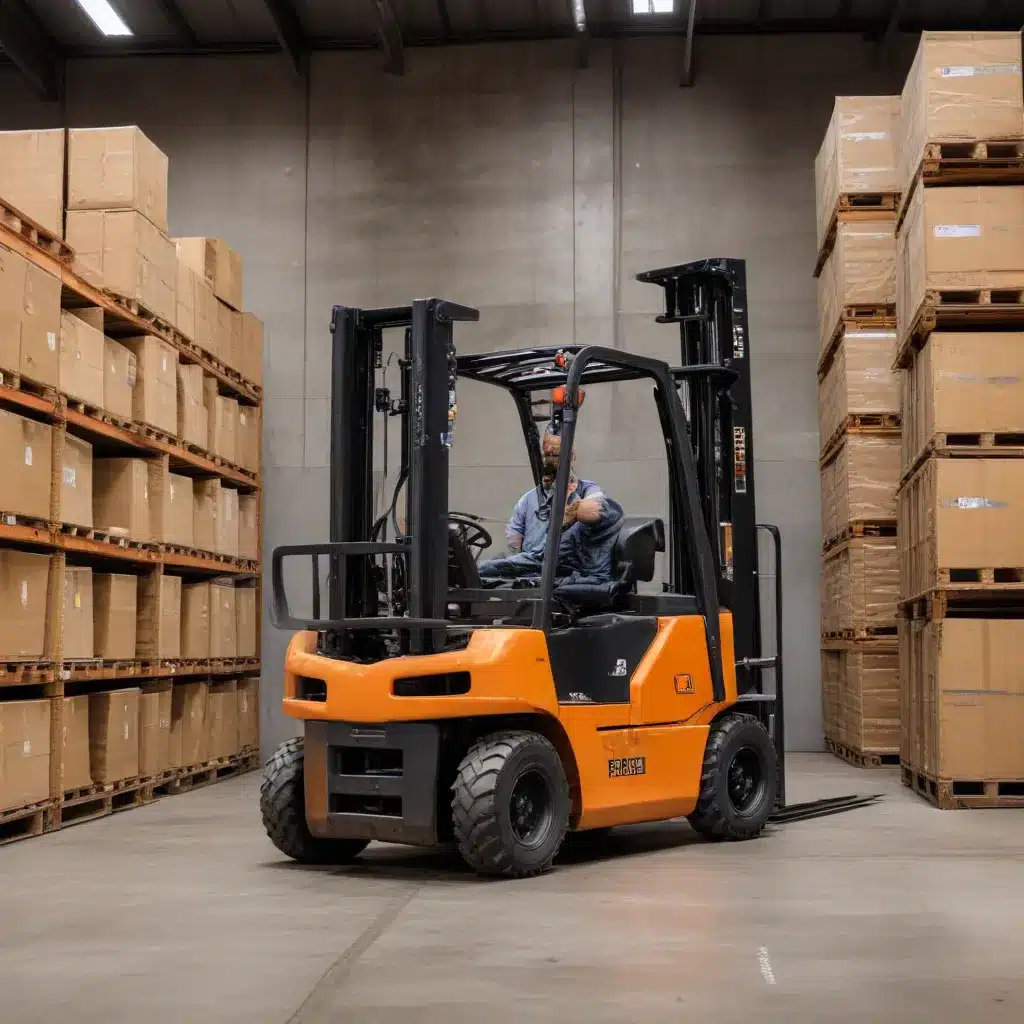
Navigating Peak Demands with Agility and Safety
As a seasoned industry expert in forklifts, warehousing, and logistics, I’ve witnessed firsthand the dramatic shifts that can occur in workflow throughout the year. From the frenzied holiday shopping season to major sales events like Prime Day, warehouses and distribution centers face an onslaught of heightened activity that puts immense strain on both their equipment and their workforce.
Balancing the dual priorities of increased productivity and worker safety during these peak demand periods is no easy feat. However, by incorporating dynamic ergonomic solutions, warehouses can adapt their operations to meet surging workloads while proactively safeguarding their employees from injury.
Understanding the Seasonal Surge in Warehouse Injuries
Warehouse work inherently involves repetitive motions, heavy lifting, and prolonged physical exertion. But when seasonal demands skyrocket, these strenuous tasks are amplified, leading to a significant rise in workplace injuries.
According to the U.S. Senate report on Amazon’s warehouse safety practices, during high-demand events, injury rates in Amazon facilities surged to nearly 10 injuries per 100 workers – nearly double the industry average. The combination of increased order volumes, extended shifts, and relentless pacing creates the perfect storm for musculoskeletal disorders (MSDs), slips, trips, and falls.
“When peak season hits, the increase in workload can put incredible stress on warehouse workers,” explains Shane Hudson, CPE at Atlas Injury Prevention Solutions. “We see a sharp rise in repetitive strain and overuse injuries when workers face nonstop physical demands without adequate ergonomic support.”
Combating the Risks of Heightened Demand
Addressing the unique stresses of peak seasons requires a multifaceted approach that prioritizes both productivity and worker wellbeing. At the heart of this strategy lies the concept of dynamic ergonomics – the ability to adjust workstations, tools, and processes in real-time to meet fluctuating demands.
Unlike static setups that assume a steady workflow, dynamic ergonomic solutions adapt to the needs of the worker, minimizing strain and maximizing efficiency, even during high-intensity periods.
Some key dynamic ergonomic elements include:
Adjustable-Height Workstations: Enabling workers to switch between sitting and standing positions throughout their shift can significantly reduce the strain on any one part of the body. This is particularly beneficial for tasks that involve both assembly and packaging, where movement between different stations is necessary.
Modular, Ergonomic Tools: Lightweight, adaptable tools and equipment can dramatically reduce the effort needed to operate machinery or lift heavy items – a critical factor during peak times when every second counts.
Strategically Placed Frequently Used Items: By minimizing reaching distances and ensuring proper lighting, warehouses can make repetitive tasks easier on workers’ bodies, allowing them to maintain a high pace without experiencing the physical toll that static workstations often cause.
“Dynamic ergonomics is about creating workstations that adapt to the worker and the task at hand,” says Hudson. “Tools like adjustable tables and modular setups allow workers to shift positions comfortably and stay efficient even when the pace picks up.”
Preparing for Peak Demand with a Comprehensive Approach
Implementing a dynamic ergonomic strategy requires a holistic, intentional effort that addresses the unique challenges of high-demand periods. This multifaceted approach encompasses several key elements:
-
Flexible Workstation Design: Investing in height-adjustable tables, modular storage solutions, and ergonomically designed equipment that can be easily reconfigured to suit the task at hand.
-
Workflow Optimization: Carefully mapping out processes to minimize unnecessary movements, reduce repetitive actions, and ensure efficient material flow through the warehouse.
-
Tailored Training: Educating employees on proper lifting techniques, workstation adjustments, and the importance of taking regular breaks to combat fatigue.
-
Real-Time Monitoring: Closely tracking worker activity, productivity metrics, and injury trends to identify areas for improvement and make adjustments on the fly.
-
Collaborative Partnerships: Leveraging the expertise of ergonomics consultants, safety professionals, and industry peers to stay ahead of evolving best practices and regulatory changes.
By implementing these dynamic ergonomic strategies, warehouses can not only weather the storm of peak demand seasons but also emerge stronger, more resilient, and better equipped to protect their most valuable asset – their workforce.
Partnering with Experts for Peak Season Preparedness
Navigating the unique challenges of peak demand periods requires specialized support and expertise. Fortunately, there are industry professionals and service providers who offer comprehensive solutions to help warehouses and logistics operations stay ahead of the curve.
Forklift Reviews recommends exploring partnerships with ergonomics specialists, safety consultants, and equipment maintenance providers to ensure your facility is optimized for high-intensity workflows. These experts can help you:
- Conduct comprehensive workstation assessments and ergonomic evaluations
- Develop customized solutions to address specific pain points and injury risks
- Provide hands-on training for employees on proper lifting techniques and equipment usage
- Implement proactive maintenance programs to keep your forklift fleet in top condition
- Stay up-to-date on the latest industry regulations and best practices
By aligning with these specialized service providers, you can equip your team with the knowledge, tools, and support they need to thrive during peak demand seasons, safeguarding your workers and maximizing productivity.
Conclusion: Embracing Dynamic Ergonomics for Year-Round Success
As an industry veteran, I’ve seen firsthand the transformative impact that dynamic ergonomic solutions can have on warehouse operations. By adapting workstations, processes, and equipment to the unique needs of high-intensity workflows, you can not only protect your employees from injury but also drive sustainable productivity gains.
Remember, the key to weathering seasonal surges in demand lies in your ability to anticipate, adapt, and innovate. Stay ahead of the curve by partnering with industry experts, implementing flexible ergonomic strategies, and fostering a culture of safety and continuous improvement.
Embrace the power of dynamic ergonomics, and watch your warehouse soar to new heights of efficiency and resilience, regardless of the time of year.

